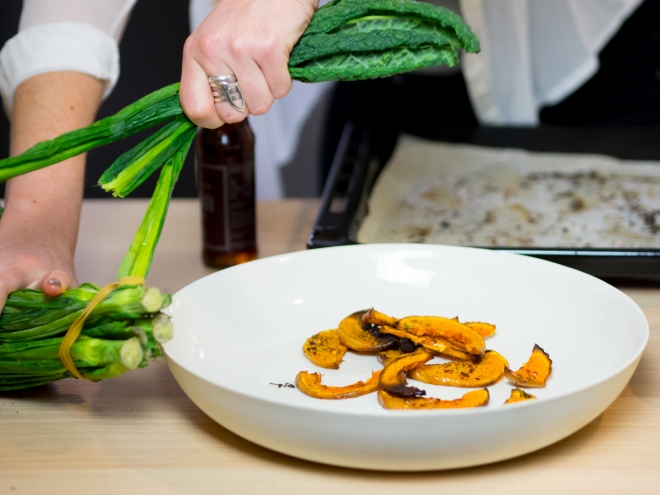This week I thought I would let you all in on a little secret. How I plan my meals for the week to make sure I a) don’t get bored b) can make meals without having to do a post-work supermarket shop c) don’t spend ridiculous amounts of money on food then waste it. So are you ready for the secret to all this brilliance?
Don’t plan the meals. Well, at least don’t plan more than one. I do not do my weekly grocery shop around what I am planning to cook (unless I’ve had a fabulous idea for a recipe or read a great recipe and want to give it a shot). Often when we make plans, life gets in the way as do our fleeting preferences. This then leads to being too tired/not interested/not having time to make all those things you planned to. My secret is I guess: Shop, then plan. Instead of making far flung plans I focus on filling my basket with the following (with one recipe usually in mind that I might want to try):
1. In season vegetables. A variety based on how many nights I am expecting to be home that week, and also things I know I can throw into salads for lunch. As it’s winter in Melbourne at the moment I am frequently buying root vegetables and green leafy things of all varieties. Choose vegetables that can be the hero of your meal too (eggplants, mushrooms, sweet potato, carrots, cauliflower all are good for this). I also always try to get something that can be snacked on like celery, cucumber, carrots etc. I usually choose 1 herb if the garden isn’t giving me much. And always at least 1 chilli, some spring onions, ginger and garlic.
2. One protein. I usually just buy 1 protein that I think I will want to use that week. It is often a whole chicken or some lean ground mince. If I want any other proteins I buy them from the butcher or fishmonger as needed. I find this helps me cut down the amount of meals I make based around meat too, thus cutting down my intake.
3. Dairy/eggs: With these in the fridge I can make a meal out of anything. I usually buy 1 type of milk (almond, coconut or cow), unsweetened Greek yoghurt, 1 type of cheese and free range eggs from a local farm. I usually also have butter in my fridge but that is not an every week purchase.
4. Two types of ‘filler’: This can be brown rice, lentils, beans, pasta, quinoa etc. They often go in my lunch and make a good base for any meal (I’ll often already have these as I buy them in bulk). Basically a legume or whole grain that is filling and satisfying.
5. Fruit: I choose two – three types of fruit that will be either used for breakfast or snacks. I always buy citrus, usually lemons because I use them to season food frequently. Almost always some bananas.
I also usually have nuts, seeds, coconut, flour and spices in the cupboard so don’t need to restock too often. I try not to buy ‘treat food’ or even ingredients to make ‘treat food’ specifically, as I’m less likely to eat it if it’s not on hand. That said I do usually have cacao powder so with the above ingredients dessert isn’t too difficult when an undeniable hankering sets in.
This selection can usually sort me for lunches, breakfasts and dinners for the week, give or take a night or two when I’m attempting to be a social being. And brunch. There’s usually some brunch action at some stage. The planning bit comes after and it’s on a nightly or bi-nightly basis. It can take 1 of two forms:
1. Google some of the key ingredients you have in your fridge/cupboard and see what comes up, alternatively flip through a recipe book, use the index to locate the ingredients you have and what you can make with these. Don’t be afraid to substitute if you don’t have a minor ingredient. Or leave it out if it is a garnish etc.
2. Asking myself: what do I feel like eating? And then follow that ponderous question with what do I have in the fridge? Try and find the cross over between those two.
Having a farm box delivered is another great way of doing this kind of meal planning. Plan your meals around what you have on hand, not on recipes that don’t suit the season you are cooking in that ask you to buy vast quantities of expensive ingredients you will never use again. That way you will spend less, cut down on food waste, and eat wholesome, seasonal food.
Happy not planning!
HH. x
Photos by Elyse Hamilton and Holly Inglis



